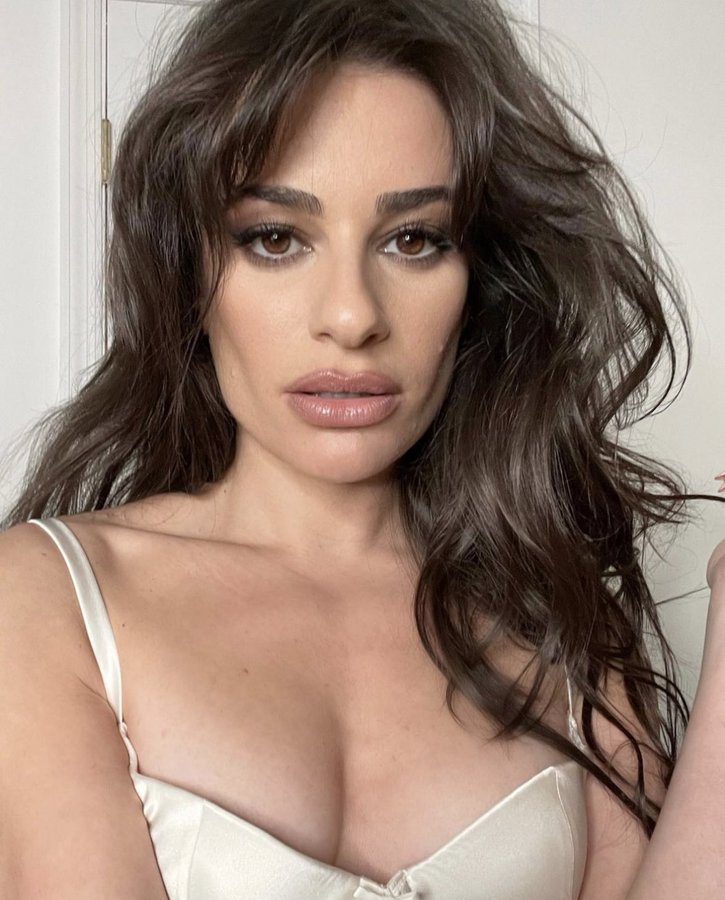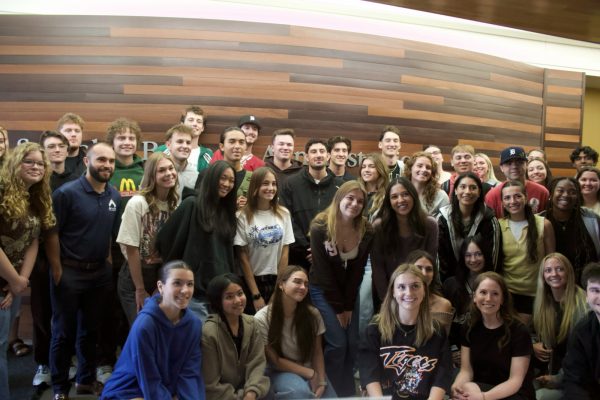What is buccal fat removal — TikTok’s latest plastic surgery fad?
The selfie of Lea Michele that generated speculation buccal fat removal was behind the actress’ more chiseled look.
Move over, Brazilian Butt Lift, TikTok has a new plastic surgery fixation taking the app by storm — buccal fat removal.
Everyone’s face comes with buccal fat pads stored within the muscles of their cheeks, between the cheekbones and jaw. The prominence of these pads varies person to person and is not typically subject to change with weight loss or gain.
Some patients pursue cosmetic surgery to remove buccal fat pads — most often for the purpose of hollowing out the area to achieve a more contoured look.
“That’s done through a small incision through the inside of the cheek, right below where your parotid gland – the salivary gland in your cheek — drains into the cheek,” Dr. Ashley Guthrie, a facial plastic surgeon and OUWB alum, said. “[The incision] is stitched back up with dissolvable stitches, [and] the recovery time is about two weeks of some swelling and mild discomfort. It takes about an hour and is usually just done in the office under local anesthesia.”
The procedure has been around for much longer than TikTok, though the app fell recently obsessed after users noticed actress Lea Michele sporting a more sculpted look in a selfie posted to her Instagram in December. While the hype around this particular post is merely speculative, buccal fat removal did receive a celebrity endorsement last year when model Chrissy Teigen revealed she’d undergone the procedure.
According to the American Society of Plastic Surgeons, those with naturally narrow faces are typically not considered good candidates for buccal fat removal, as this part of the face thins gradually with age and removal of this fat could contribute to a gaunter appearance over time. Some critics of the procedure’s romanticization across TikTok cite this risk as a central reason the trend is dangerous to perpetuate in a space so intensely populated by young people, while also denouncing the implication that rounder faces are less appealing.
“I’m almost 30 and I look young as f**k, and you know why? These freaking cheek-ies, baby!” skincare content creator Rachel Finley said via her TikTok profile @hydrationceo. “Please do not make an irreversible change to your body because of a trend.”
Finley’s comment illuminates another part of the procedure medical experts urge young people to be aware of — its permanency. While the upper cheekbone and jaw areas can be altered with filler, the area of the cheek where buccal fat resides does not respond well to filler — so once you remove the fat there, it cannot be restored.
“You don’t want to do it as a result of a fad and then, down the line, be sorry that you did it or come to find out that really wasn’t what you needed,” Guthrie said. “Things like filler and botox and those kind of things — there’s less risk in trying to be trendy with them because they’re temporary, but when you talk about doing actual surgical procedures where you’re permanently altering your face, it needs to be something that’s thought about for a long time.”
Buccal fat removal is merely the latest in a long line of cosmetic surgery and treatment trends to generate buzz across social media. Its predecessors include procedures that have been household names for longer, such as rhinoplasty and lip injections, as well as more recent phenomena, such as the double-chin targeting, nonsurgical kybella procedure.
Often, what’s trending in plastic surgery changes tunes and contradicts itself just as quickly as the initial trend developed. This past year, TikTok claimed rumors suggesting several Kardashians had gotten their Brazilian Butt Lifts (BBL) reversed meant we had reached “the end of the BBL era.” So if you’d gotten the procedure because TikTok told you it was ‘in’ during June only to hear it was ‘out’ come August… welcome to TikTok.
Guthrie says TikTok trends like this one do impact the types of questions posed and desired results requested by patients during a given time — though never her professional process for determining which surgery is right for a particular patient.
“My judgment is going to be the same whether they want it because they saw it on TikTok or not,” Guthrie said. “I’m still going to evaluate them and determine whether I think it’s appropriate or not, but it definitely increases the number of those conversations — not necessarily the number of surgeries that are performed.”
Guthrie urges young people to see beyond the changing tides of their ‘For You’ pages and consider that there is no one-size-fits-all approach to beauty or plastic surgery.
“While TikTok and social media platforms definitely have a positive role in some things, I think they can be dangerous, as well, in terms of influencing young people to feel that they need to have these different procedures in order to be beautiful or attractive and become somewhat of a thing of everyone trying to achieve the same, exact, standard look, which isn’t necessarily what’s good for everyone,” Guthrie said. “Everyone has a different face shape, everyone is beautiful in a different way, and I shy away from making everyone look like a cookie cutter.”










D. Adjoke • Jan 11, 2023 at 2:59 PM
How does the inclusion of this article in the Post promote focusing on one’s health? Its very presence promotes a plastic surgery fad, and thereby discourages body positivity, not to mention the obvious perpetuation of the objectification of women.